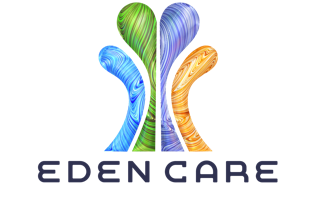The Power of Dopamine: The Drive Molecule Behind Our Darkest Desires
Has anyone ever heard of the Rule of Threes?
You can survive:
Three minutes without air
Three days without water
Three weeks without food
Now imagine this: you haven’t had water for two and a half days. You're dehydrated, dizzy, desperate. There's a single glass of water sitting behind me. What would you do to get it?
Most people say: anything.
That’s not exaggeration. That’s what the body does when it's in survival mode.
And this is exactly what addiction feels like. Not a moral failing. Not weakness. Just pure, urgent thirst. And the molecule driving that thirst is dopamine.
Dopamine: The Molecule of More
Dopamine isn’t about pleasure. It’s about pursuit. The craving. The next hit. The itch that never quite goes away.
It’s what drives someone to:
Refresh their phone hundreds of times a day
Binge on food until it hurts
Gamble away money they don’t have
Work themselves to the bone chasing a high that never sticks
Dopamine doesn’t care what you’re chasing. It only cares that you keep chasing.
A Positive Ingrainment of a Negative Behavior
When I speak to clients struggling with disordered eating, self-harm, or compulsive behaviors, I explain it this way:
A positive ingrainment of a negative behavior.
It’s not about liking the behavior. It’s about the fact that it provides relief.
The bulimic feels calm once the purge confirms the food is gone
The anorexic feels achievement in the discipline of hunger
The person who cuts feels momentary control or clarity through pain
These actions become encoded as functional rituals. Not because they are logical, but because they offer a dopamine-driven escape or reward in the moment.
The Hidden Triggers of Dopamine Overload
This isn’t just about clinical addiction. It’s wired into everyday behaviors:
Compulsive scrolling
Picking fights for emotional stimulation
Escaping into Netflix marathons
Chasing validation through likes and notifications
If you’ve ever felt the pull to do something, even when you didn’t want to—that’s dopamine talking.
How to Heal the Dopamine System
Dopamine thrives on stimulation. But the good news is that the brain is plastic. You can reset it. Retrain it. Heal it.
Here’s a challenge to start.
Five-Day Dopamine Reset Challenge
Day 1: Digital Fast (Minimum 6 hours)
No social media. No screens outside of what’s essential. Replace with journaling, walking, or stillness.
Day 2: Single-Task Only
No multitasking. Eat without your phone. Drive without music. Be fully present in everything you do.
Day 3: Cold and Clean
Take a cold shower. Clean a small space. Challenge and clarity come through simplicity and discomfort.
Day 4: Silence and Stillness
Spend 20 minutes in complete silence—meditating, breathing, or just sitting. Notice the discomfort. That’s where rewiring begins.
Day 5: Create, Don’t Consume
Make something. Write. Cook. Draw. Dance. Avoid passive content until later in the day. Let your brain produce.
Dopamine Detox Checklist
Use this list to track small daily shifts. These are the habits that reset your reward system:
No social media for several hours
Cold shower
Mindful walk without distractions
Ate without a screen
Practiced 5+ minutes of stillness
Created something
Slept 7–9 hours
Ate protein-rich meals
Moved your body for at least 10 minutes
Avoided multitasking
Final Thought
Whether it’s addiction, compulsion, or burnout, the common thread is a brain running on survival logic. It’s not about willpower. It’s about wiring.
When you understand dopamine’s role, you stop blaming yourself—and start building new patterns. Recovery isn’t about depriving yourself. It’s about learning how to want better.
by Daniel Breeyear, MSN, APRN, PMHNP-BC, BHCC, FMHC
Owner and Director of Care at The Eden Center for Integrative Care
